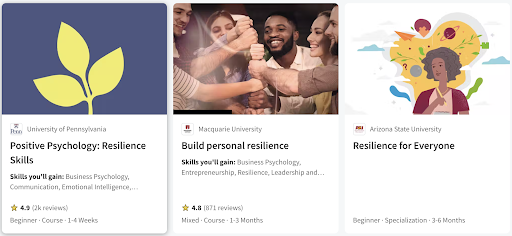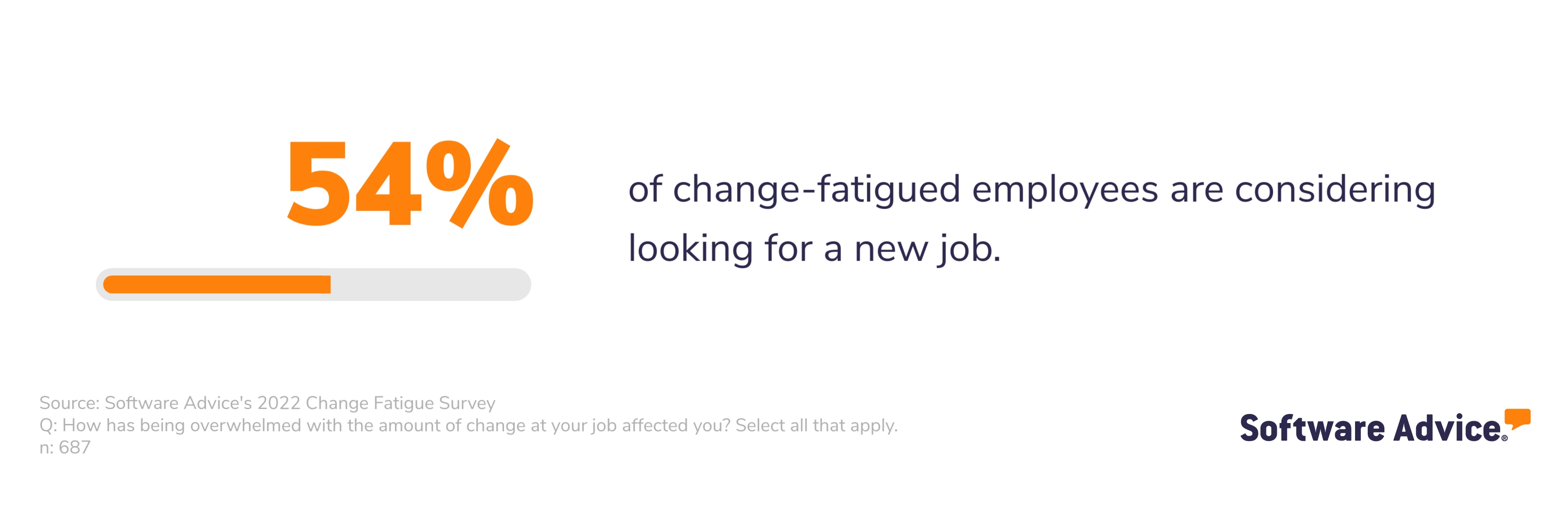A Guide to Fostering Resilience in the Workplace
A recent survey of HR leaders revealed change management is the second most-pressing challenge for them to overcome this year [1].
As a chief human resources officer (CHRO) or HR leader, you’re well aware of the role workplace resilience plays in keeping morale high during uncertain or challenging times. However, you’re here because you need a strategy to do so.
Fortunately, we can help with that. And, in order to provide you with the best advice possible, we spoke to Sarah Morgan, an HR professional with nearly two decades of experience who is also the founder of BuzzARooney LLC and current Director of Equity & Inclusion at Humareso [2].
With insights from Morgan and Gartner research, we’ve outlined three strategies you can use to foster employee resilience at your workplace.
What is workplace resilience and why is it essential?
Workplace resilience is a term that refers to employees’ ability to recover from stressful situations in the workplace. We asked Morgan how she would define resilience, and here’s what she had to say:
From mistakes made on the job to large organizational restructurings, there are many kinds of situations that employees need to be able to bounce back from throughout their career.
Further, a 2022 Software Advice Survey* revealed that the majority of U.S. employees are experiencing burnout due to the amount of organizational change they’ve been subjected to over the last few years:

Plus, employees aren’t expecting things to slow down: 78% of survey respondents said they expect constant change to happen at their job moving forward. Because of this, there’s an urgent need for organizational leaders to exemplify and promote resilience in the workplace.
3 strategies for building resilience in the workplace
1. Prioritize employees' mental health
It’s not the first time we’ve said it, but it begs repeating: Your company culture should prioritize employees’ mental health as much as their physical wellbeing.
However, according to Software Advice's Work Friction Survey**, this is an area where many businesses are falling short. When asked whether they agree or disagree with the statement: "Mental health benefits are offered to all employees and covered at the same level as physical health benefits," 41% of survey respondents disagreed to some extent.
In order to support your employees' mental health, you need to create a culture where people can be honest about how they feel. This is key to Morgan, who believes you can’t have resilience without vulnerability. She says:
Sarah Morgan
Director of Equity & Inclusion at Humareso
We’ve covered how to support mental health in the workplace in depth on our blog in the past, so we recommend checking out that content for five mental health support strategies you can introduce to your workplace.
In the meantime, one thing every business should do is set up an EAP (employee assistance program). Amongst many other things, EAPs provide stress management training and counseling for work-related issues, which makes them particularly valuable for businesses looking to build a resilient workplace.
2. Embrace open source change management
Open source change management is a tactic where employees are actively engaged in change initiatives. With this approach, employees are involved in change decisions and implementation planning, which is different from the traditional, top-down change management model where senior leaders make decisions and communicate changes to the rest of the workforce.
Historically, organizations have defaulted to top-down change management—but truthfully, this model doesn’t work well in today’s work environment. And if the “Great Resignation” and headlines about workers protesting top-down changes aren’t proof enough [4, 5], consider this: Gartner’s Workforce Change Survey showed that 74% of employees were willing to change work behaviors to support organizational changes back in 2016, but that number dropped to 38% in 2022 [3].
To quote Morgan:
As is established early on in this guide, change is a big stressor for employees—and that stress is amplified when they have little or no control over the situation at hand. But there’s proof that directly involving the workforce in the change process has the potential to drive positive organizational outcomes [3]:
Change fatigue can decrease up to 29%
Willingness to change is 1.5 times more likely to happen
Change success is 14 times more likely to happen
Below, we’ve visualized how you can shift your organization’s change management approach from top-down to open-source:

Tech tie-in
Need tech to support your next business transformation? Browse change management software.
3. Provide resilience training
As an experienced HR practitioner, Morgan understands the importance of developing soft skills. However, as a consultant, she also knows that most corporations are severely lacking in this area. She says:
Resilience training is a soft skills development strategy that involves teaching your employees new tactics that help them navigate difficult situations (such as reframing techniques and problem-solving skills). Investing in a resilience training initiative can be an effective way to equip your employees with the knowledge they need to build their own personal resilience.

A variety of resilience training courses on Coursera [6]
As for how to deliver resilience training, that’s up to you and your organization’s learning and development director. If your business has an e-learning platform with a course library, you may be able to find employee resilience training content there. Or, you can invest in a web-based virtual learning platform that features resilience training options for your employees.
Learn more about corporate e-learning
Alternatively, you can work with an EAP to deliver resilience training. PAS (Personal Assistance Services), an EAP provider located in Missouri, has published an entire guide on delivering organizational resilience training [7]. But if your EAP provider doesn’t have any programs for fostering a resilient workforce, they should be able to refer you to a third party that can help you develop and deliver this kind of training.
Keep your finger on the pulse—invest in an employee pulse survey tool
Missed deadlines, communication breakdowns, mergers, acquisitions, and other organizational changes: These are stressful situations that can occur in the workplace and that exemplify why it’s essential to have resilient employees.
Failing to provide the right support and resources to build resilience can lead to a toxic work environment, chronic stress amongst employees, burnout, and at worst, turnover:

As a final piece of advice, we recommend getting to the bottom of how your employees are feeling with an employee pulse survey. When sent to workers on a regular basis (such as monthly or quarterly), employee pulse surveys can provide insight to your employees’ job satisfaction and engagement levels over time.
Morgan recognizes the role that these kinds of employee engagement surveys play in gauging when your people are experiencing fatigue, burnout, and/or resistance to change. She told us that while a survey can’t measure how resilient your people are, it can alert you of problems that need to be addressed:
Here are four final tips for using employee pulse survey tools to capture honest feedback from your workforce:
Make results anonymous
Keep surveys short (five to 10 questions)
Follow a predictable cadence (such as once a quarter or every couple of months)
Apply analytics to results data
Learn more about building a positive work environment
Note: Questions and responses have been edited for brevity and clarity.
Survey methodology
*Software Advice’s 2022 Change Fatigue Survey was conducted in March 2022 among 970 U.S. employees representative of the U.S. workforce by age, race, and gender. Respondents had to be with the same employer since the start of the COVID-19 pandemic. The goal of this survey was to learn how employees have responded to changes at their job over the course of the pandemic.
**Software Advice’s 2023 Work Friction Survey was conducted in February 2023 among 902 respondents to learn more about how often and what kinds of employees go outside of formal work processes. All respondents were screened to ensure they were a U.S.-based worker at an organization with at least two employees.
Sources
Sarah Morgan, Founder & Chief Excellence Officer, BuzzARooney LLC
Bolster Your Change Initiative Success With Open-Source Change Management, Gartner
Hundreds of Twitter employees resign after Elon Musk’s ‘hardcore’ ultimatum, The Verge